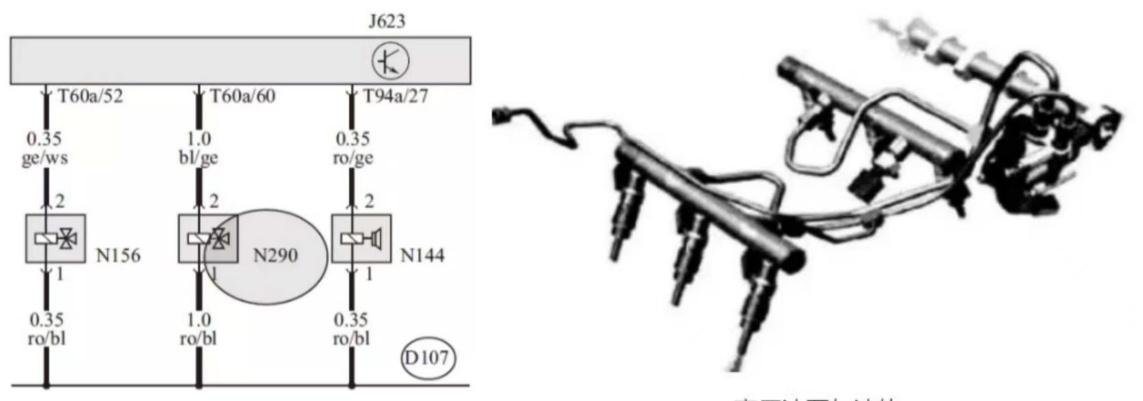
Audi A6L2.8L car engine failure phenomena
A 2008 Audi A6L2.8L car, equipped with a BDX engine, and a mileage of 143745km, the total engine speed is unstable, acceleration is weak and the front of the engine issues a “clatter” noise.
Fault diagnosis
Start the engine, idling when the “clatter” noise is heard. A stethoscope is used to determine the part of the noise and the feeling of the noise from the engine fuel supply system of the high-pressure oil pump.
High-pressure oil pump rattling is generally due to wear and tear of the drive mechanism, disassemble the high-pressure oil pump to check the worn parts, find that the suspected parts do not appear to be expected wear and tear, and drive cams are not worn. At this point, the point of failure of the noise is set to the high-pressure oil pump itself, that is to say, due to its internal wear caused by the noise, but with the replacement of the high-pressure oil pump test drive, the fault remains.
Read low-pressure fuel system 103 data set with V.A.S5052, normal. Read the high-pressure fuel system 140 data set, the high-pressure fuel pump regulation value is zero, abnormal, that is, the high-pressure fuel pump is working at full load, and the normal value is about 50%, this data will be the root cause of the noise identified in the control of the high-pressure fuel pump.
According to the wiring diagram, test the fuel pressure regulator valve N290 of the high-pressure fuel pump.
- J623 an engine control unit;
- N156-intake manifold changeover solenoid valve.
- N290-fuel pressure regulating valve;
- N144-electrically controlled hydraulic support solenoid valve on the left side of the engine.
- Utilize diagnostic instrument for N290 to perform diagnosis of executive components, normal.
- The measurement of N290’s 1-pin supply voltage is normal for the battery voltage.
- Measure N290’s 2-pin and engine control unit J623 T60a/60 between conduction, and normal.
- Measure the voltage of pin 2 of N290, which is constant at 11.5V, abnormal, indicating that the engine control unit does not send a PWM pulse width modulation signal to N290.

Through the above tests, it is inferred that the engine control unit may be an internal failure, resulting in no PWM regulation signal to make the N290 work at full load and replace the engine control unit, but the fault remains.
Check this step as if everything is back to square one, the part of the noise is found but did not find the fault point. Check the fault code again, and find that the stored “G28 speed sensor and G40 Hall sensor mutual position error” fault code, this fault code as a starting point for diagnosis.
Read the engine control unit 003 data set, the engine load value is 26%, and the normal value is about 13%.
Read 091 data set, showing that the actual adjustment value of cylinder column 1 intake camshaft and the prescribed adjustment value deviation is too large, this situation is usually camshaft adjustment valve stall.
The disassembly and inspection found that the camshaft adjustment valve N205 had excessive carbon deposits in the oil channel, causing the adjustment valve to stall. Clean the engine lubrication system, replace the camshaft adjustment valve, replace the oil, and troubleshoot.

Failure Summary
The three cylinders in cylinder row 1 have decreased in power output due to the error in gas distribution timing, resulting in a decrease in overall engine power.
Read 003 data set engine load value of 26%, the normal value of 13% or so, indicating that the engine control unit idle stabilization using multi-output control, when the load increases the control unit to increase the high-pressure fuel pressure, thus commanding the N290 full load work, resulting in high-pressure oil pump due to high oil pressure and issued a “clattering noise.
If your car breaks down, please contact us, we can provide original parts and engines to get your car started again at the best price.
